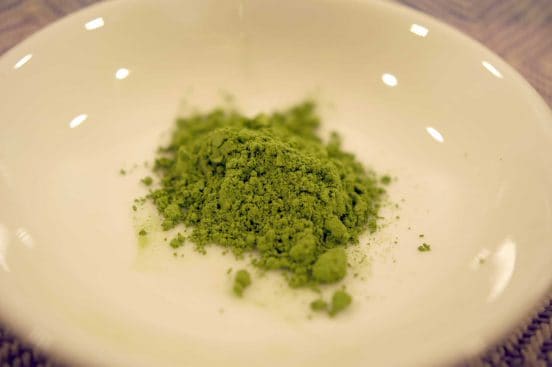Let’s continue with a matcha that is not as seasonal-special as Tsubokiri, but (also) belongs in the pricier and higher-quality category: Matcha “Kinrin” from Marukyu Koyamaen.
Higher and Lower Quality of Matcha
Matcha is mainly separated according to its usability for “thin” usucha or “thick” koicha.
For usucha, which is made with less matcha powder (around 2 scoops of the chashaku tea spoon), a stronger-tasting, cheaper matcha can be used. Its bitter taste will be diluted, anyways.
For koicha, which is made with 3 scoops matcha powder (or more, depending on tea school – I use 3 scoops for my ordinary bowl of matcha, anyways, and it’s no koicha), the quality of the tea is much more important. With the high concentration of tea in that, the bitterness would otherwise be extreme.
Kinrin Matcha
“Kinrin” from Marukyu Koyamaen is their cheapest tea of the higher grade considered usable for koicha.
Prepared as koicha, it is said to still have some bitter taste; I cannot testify to that, from my experience.
To me, Kinrin prepared as usucha has a very nicely rounded taste, with quite a strong and rich, umami aroma.
It has notes I want to describe (as sometimes done for sencha) as spinachy. Not in a negative sense, but in the sense of a strong, satisfying aroma.
For a true high-quality matcha (for koicha), Kinrin lacks in sweetness and is not as strong in umami as those would be; it also doesn’t cost as much, though.
Compared to cheaper matcha, which are only good for making usucha, it does not have the bitter notes that keep so many green tea-beginners from enjoying those.
(We will get to know examples of both of these aspects.)


Leave a Reply
You must be logged in to post a comment.